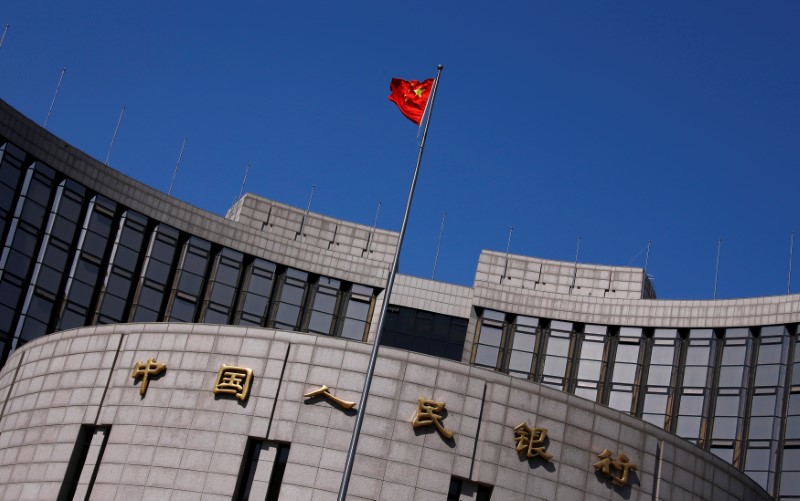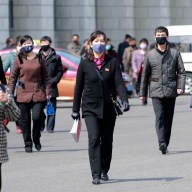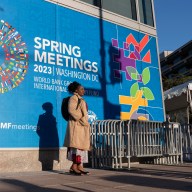By Winni Zhou and John Ruwitch
SHANGHAI (Reuters) – China gingerly raised a key short-term interest rate on Thursday following the U.S. Federal Reserve Bank’s move overnight, in a symbolic reminder that Beijing is keeping an eye on global market trends even as it cracks down on financial risks at home.
The People’s Bank of China (PBOC) said it had increased by 5 basis points (bps) the rate on 7-day reverse repurchase agreements, or reverse repos, one of its most commonly used tools to control liquidity in the financial system.
The Fed raised U.S. interest rates by 25 bps, or a quarter of a percentage point, on Wednesday and forecast at least two more hikes for 2018.
The PBOC’s move had been widely expected and was the central bank’s first major policy decision under new Governor Yi Gang, who was appointed by parliament on Monday as part of a sweeping reshuffle of China’s cabinet under ever-stronger President Xi Jinping.
“I think it’s just a symbolic rate hike again to avoid the China-U.S. rate spread from widening too much,” said Ken Cheung, senior FX strategist at Mizuho Bank in Hong Kong.
“A 5 bps hike is enough because yuan depreciation is not a big concern. And the PBOC is refraining from lifting rates aggressively amid the regulation reform and benign inflation pressure.”
The new rate on the 7-day reverse repo was raised to 2.55 percent, while the PBOC injected 10 billion yuan ($1.58 billion) into the financial system.
The news prompted Chinese 10-year treasury futures for June delivery
BLOW-OUT
Many market watchers had expected the PBOC to follow a Fed hike with a 5-10 bps increase in the borrowing cost for Chinese interbank loans.
That would keep the U.S.-China rate differential from getting too wide — which would risk a resurgence in capital outflows from China.
But analysts said the move was also a signal to banks and other financial institutions that the government is pressing ahead this year with its campaign to reduce risks in the financial system.
Capital Economics said in a note that it believed the rate hike was an effort by the PBOC to show it would follow the Fed to minimize outflows and prevent a yield gap blow-out.
But the consultancy added that the PBOC may revert to looser monetary conditions in coming quarters if economic activity cools more than expected.
The PBOC had similarly inched up some rates after the Fed hiked its policy rate last March and December.
It began nudging up short-term rates in early 2017 as authorities’ clampdown on riskier financing practices kicked into higher gear, but it has moved cautiously to avoid a hit to the economy.
In a statement, the PBOC said the rate increase was a normal response to the Fed’s move that would help shape interest rate expectations and guide “reasonable” growth in credit.
FOLLOW SUIT
With global markets expecting more monetary tightening in the United States, economists think China will follow suit with further increases of its market rates, although there is no clear consensus on how high rates may go.
Nie Wen, an economist at Hwabao Trust in Shanghai, expected the PBOC to raise market rates by a total of 25 bps this year, or as much as 50 bps if consumer inflation in China rises above 3 percent.
Economists at ANZ expect the 7-day reverse repo rate to rise another 30 bps this year as China continues with a tightening bias.
However, much of the official focus this year is expected to be on a continued tightening of the regulatory screws, with a flurry of measures already announced in the last few months.
Some market watchers also expect the PBOC to start moving benchmark rates again, but said the move would be asymmetric, with only the deposit rate rising to haul negative real deposit rates above the water line.
The PBOC has not changed its benchmark one-year lending and deposit rates since October 2015, with the central bank preferring to guide borrowing costs via liquidity operations and interbank market rates.
“On the one hand, the PBOC needs to push up the interest rate in the domestic financial market, so as to curb domestic financial speculation and prevent capital outflow,” said Chaoping Zhu, global market strategist at J.P. Morgan Asset Management.
“On the other, given the probability of a correction in asset prices and the potential for economic slowdown, it is not an optimal choice to adjust up the benchmark deposit and lending rates. Therefore, increasing the 7-day reverse repo rate provides the PBOC with the flexibility to control market liquidity and financing costs.”
Analysts polled by Reuters expect China’s GDP growth to slow to 6.5 percent this year from 6.9 percent in 2017, pressured by higher borrowing costs and cooling investment in the property market. That would be in line with the government’s 2018 target.
(Reporting by Winni Zhou and John Ruwitch; Editing by Kim Coghill)










